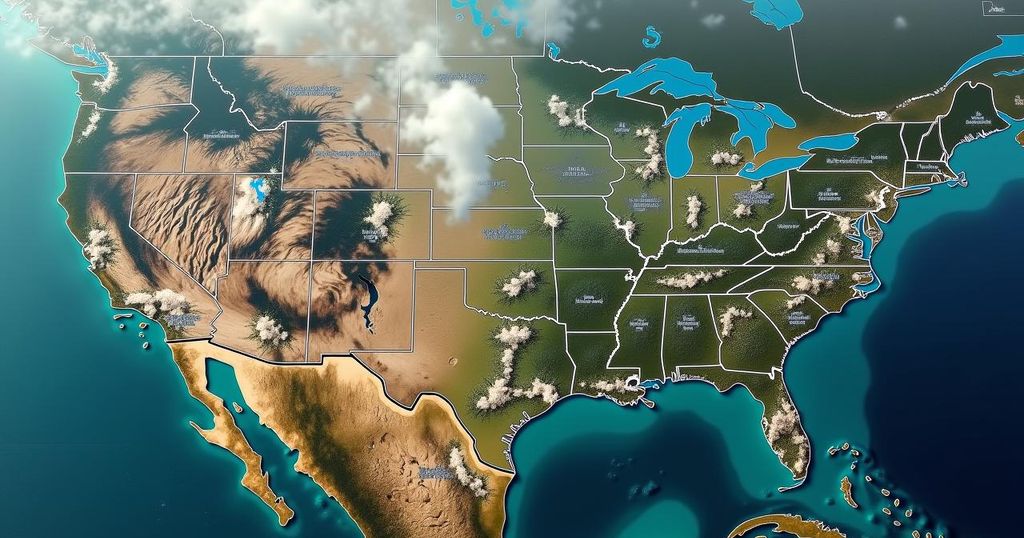Hurricane Milton: A Less Severe Storm Amidst Intensifying Political Climate
Hurricane Milton ultimately downgraded from a category 5 to a category 3 storm, resulting in less damage than feared across Florida’s west coast. The situation reflects a significant public compliance with evacuation orders. However, the pre-storm warnings have raised questions about their severity, potentially as a counter to prior disinformation concerning federal response efforts in emergencies. With the political climate heating up ahead of the elections, the intersection of disaster management and political rhetoric remains a crucial consideration.
Hurricane Milton, which was initially feared to be a catastrophic event, ultimately did not manifest into the storm anticipated by authorities and residents alike. As I traveled along Florida’s western coastline from Fort Myers, the area was under a mandatory evacuation due to warnings pertaining to an unprecedented storm. Meteorologists had expressed concerns about Milton’s erratic behavior, which included oscillating both north and south prior to landfall, thereby increasing apprehension concerning its eventual impact. Fortunately, the hurricane’s intensity diminished from a catastrophic category 5 to a category 3, which significantly lessened the expected wind damage, despite the continued worries regarding substantial storm surge threats in low-lying regions. Initial observations in Punta Gorda revealed overturned boats, yet no major structural harm was reported, indicating that the area had narrowly escaped significant consequences. Moving further north to Venice, one could see streets littered with debris, but again, no severe damage was evident. However, Casey Key was closed to traffic as the local authorities conducted house-to-house checks for residents who may have stayed against evacuation orders. Conversations with locals indicated that the anticipated storm surge had only reached a foot or two, much less than feared, which was a considerable relief. In terms of infrastructure, reopening critical bridges, such as the Sunshine Skyway Bridge to St. Petersburg, allowed for ongoing relief efforts. Significant focus was directed toward the Tropicana Field stadium, which was housing emergency services and suffered damage to its roof. In summary, many residents of Florida’s west coast were fortunate, largely attributed to compliance with evacuation advisories. However, there exists a risk that this experience may lead people to perceive future storm warnings as exaggerated. For instance, Tampa’s mayor had issued stern warnings regarding life-threatening conditions for those who chose to remain but was subsequently contradicted by the survival of many individuals who remained. It raises the question of whether the extensive pre-storm warnings represented an overreaction by the Biden administration, especially in light of the disinformation circulated by former President Trump and others regarding federal recovery efforts post-Hurricane Helene. Furthermore, such conspiratorial rhetoric has permeated social media, contributing to widespread skepticism. The Federal Emergency Management Agency (FEMA) Administrator characterized these conspiracy theories as unprecedentedly harmful. Although Hurricane Milton had the potential to cause extensive damage, it was not the storm that residents feared. In contrast, the political climate in the United States is intensifying with the upcoming elections.
The article discusses the impact of Hurricane Milton on Florida’s west coast and examines the broader political context surrounding emergency management and communication. In the aftermath of disinformation regarding federal response efforts post-Hurricane Helene, local authorities and the Biden administration were faced with the challenge of effectively communicating potential threats while ensuring public compliance with emergency protocols. The contrasting interpretations of the threat posed by Hurricane Milton serve as a backdrop for examining the interplay between natural disasters and political dynamics, especially leading up to an election.
In conclusion, Hurricane Milton highlighted the complexities involved in emergency response and public communication. While the storm itself did not cause the catastrophic damage predicted, the pressing need for clear and effective communication strategies is paramount in rebuilding public trust in local and federal agencies. As political tensions rise in the United States, effective management of public perceptions regarding natural disasters will be crucial for ensuring safety and preparedness for future events. The storm of American politics, particularly in the context of the approaching elections, presents its own set of challenges that must be navigated with care.
Original Source: news.sky.com




Post Comment